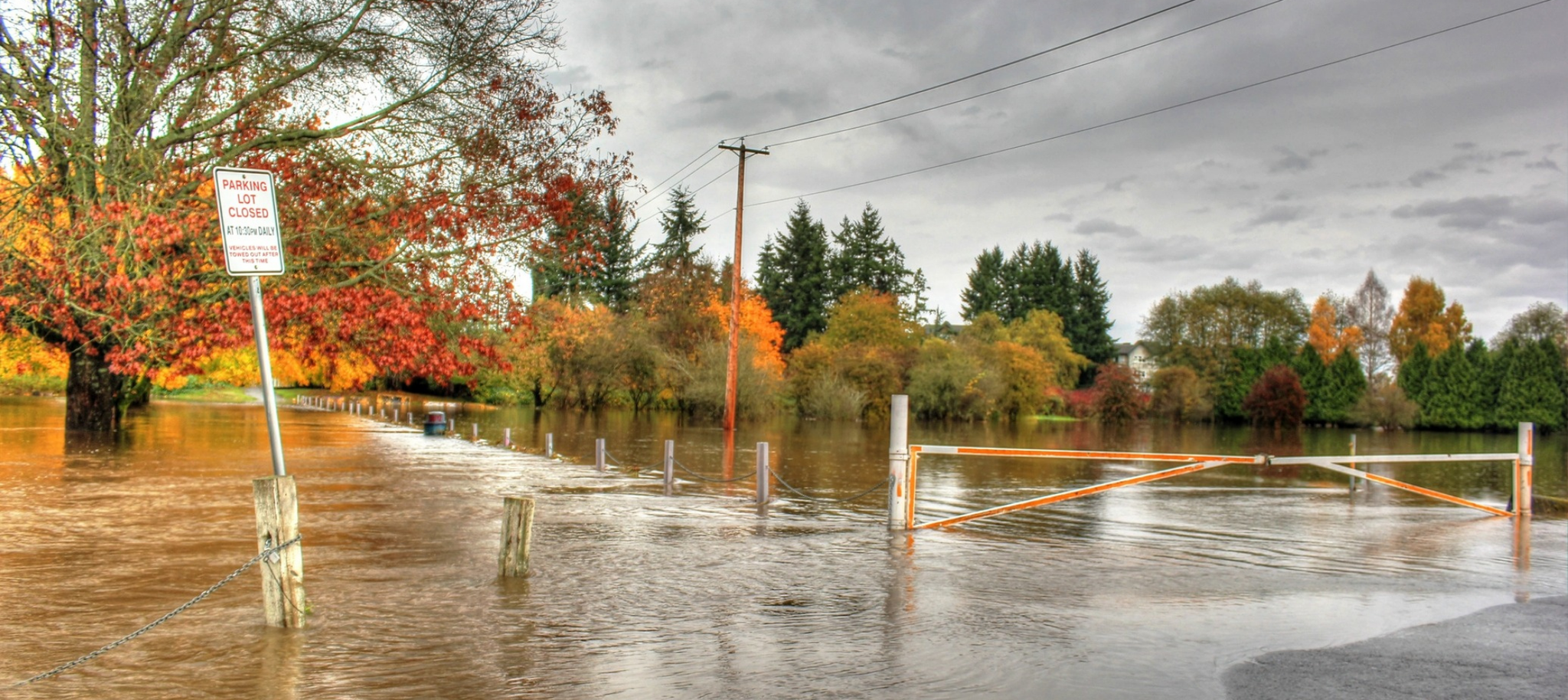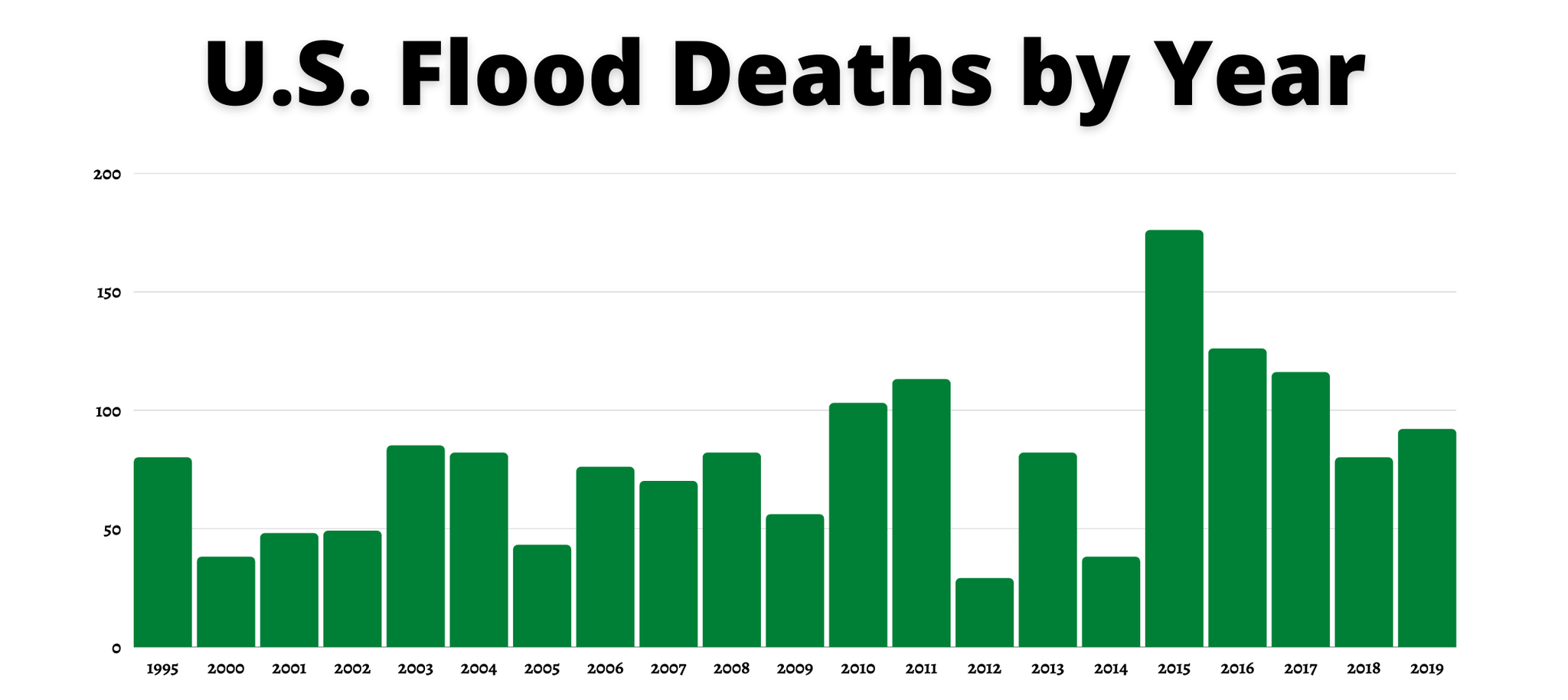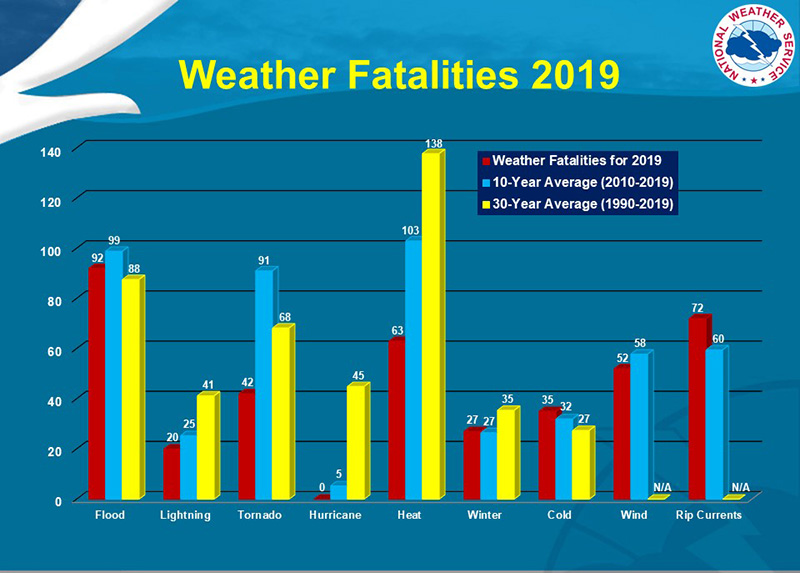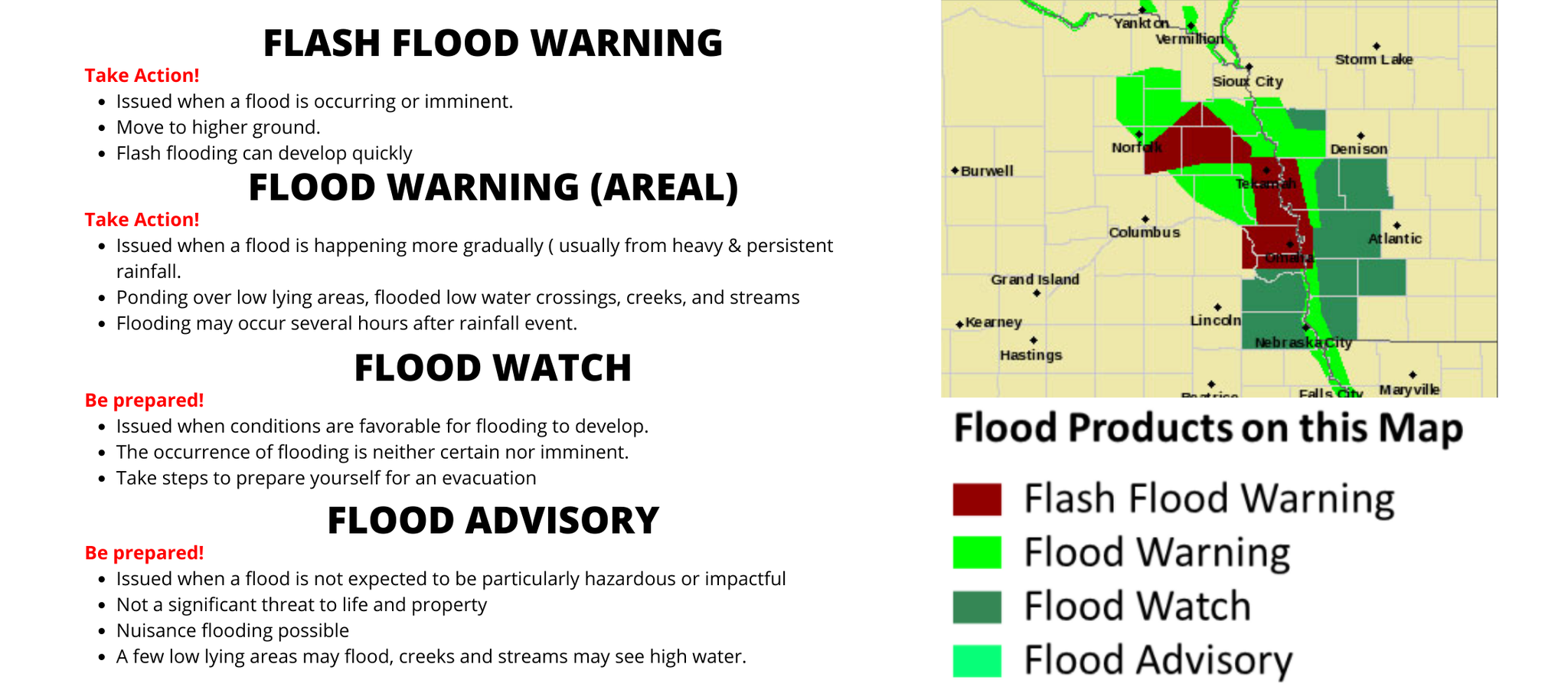Breaking down the threats - What you should know pt. 3
Flooding is one of the most common weather-related hazards we face here in the Ozarks. We have around 3,000 low water crossings, many rivers, creeks, and low-lying areas, that flood frequently. Just think about this past weekend? Moderate flooding occurred along the Buffalo River in McDonald County, and flooding was seen on the James River, Big Piney, and Roubidoux Creek. We had multiple water rescues over the weekend because of people driving through flooded roads.
*****Update***** Both subjects have been rescued. Huge thank you to the efforts of the Vichy Fire Department, MSHP...
Posted by office"="">https://www.facebook.com/marie... of the Maries County Sheriff Chris Heitman on Friday, March 12, 2021
When a flood occurs, water is overflowing onto what would otherwise be dry land. How does a flood develop? It’s simple. Flooding is caused by heavy rain, storm surge, snow or ice melt, and dams or levees breaking.
Heavy rain floods
Flooding occurs where it rains the hardest and for the longest time. If the ground is too dry and the rain comes in downpours, runoff can quickly cause low-lying areas to flood. Along the same lines, if the ground is already saturated from previous rainfall, it can’t absorb any more water, and again runoff leads to flooding conditions. If the rain lasts for an extended period of time, as is the case with stationary fronts, then we will have prolonged flooding issues.

Water levels rising over the top of the banks of rivers leads to river flooding. The water may overflow the banks and spread onto roads and low-lying areas, leading to dangerous driving conditions. River floods can develop slowly or in a matter of minutes.
Inland flooding
We have experienced inland flooding right here in Springfield. Last year heavy rains pooled into a dip in the road on Chestnut Expressway. Water rescue teams responded to the scene where motorists were stranded in floodwaters.
Steady rain over several days or a quick burst of intense rainfall is responsible for these types of floods. Snowmelt can lead to inland flooding, but it’s not as common. If a dam or water drain gets blocked by debris, inland flooding can occur. Metropolitan areas experience this commonly because of concrete roads, sidewalks, and a dense population of buildings. With few places for the water to go and little greenery to absorb the water, streets are turned into rivers and water collects in lower-lying areas.
Flash Flooding
Flash floods occur when heavy downpours may quickly overflow a stream and creek. In these cases, the dangers of the flood combine with the danger of fast-moving water. While heavy rain over a short period is the main cause, they also develop due to dams breaking, levees failing, or inland flooding.
Flash flooding is the #1 weather killer in the United States. Why? They can develop quickly with little or no warning. Flash floods destroy buildings, wash away cars, wash out bridges, and uproot trees.
Let's look at the facts
Flooding is the most deadly weather-related hazard. The 30 year average ( 1990 through 2019) for flooding deaths is 88 people. Over the last ten years, however, and notably these last five years, flooding-related deaths have increased. The ten-year average for flooding deaths (2010 through 2019) is 99 people. It’s a very concerning trend.

In Missouri, other troubling trends emerge. Between 2015 and 2019, 39 people died from floods, 34 of those people were in vehicles. Flood deaths in cars are preventable. Just don’t drive through flooded roads. More on flooding safety can be found in the following section.

Damages from floods are very costly. Since 1980 the National Oceanic and Atmospheric Administration have been tracking billion-dollar disasters. Each flooding event leads to about $4.6 billion in damages.
One thing of note is that as temperatures rise globally, so does the atmospheric capability of holding water. This leads to an increase in precipitation intensity, duration, and even frequency.
Flood Safety - What to know right now
First, you need to learn the difference between flood watches and warnings. When these alerts are issued, take them seriously. Each alert is a call to action. The following picture breaks down the differences between the flood alerts.

By 2024, all weather advisories will be non-existent. The National Weather Service is working to phase out advisory alerts in order to consolidate them and alleviate confusion among the public.
Before the flood
- Have a plan - Where will your household go in case of a flood? How will you get there? Know where the higher ground is located.
- Build an emergency kit. This kit is essential for ALL emergencies. Have the kit in an easily accessible place so you can grab it quickly. Tailor the kit to your family with any food, medications, phone chargers, etc. you may need
- Know what floods are common in your area. See FEMA’s Flood Map for information by clicking HERE.
- Sign up for emergency alerts through your weather app (KY3 is the best one :D )
- Know how flooding develops (see previous sections above)
- Practice evacuations
- If you live near low water crossings, have alternative routes planned so you won’t drive near those roads if they're flooded.
- Keep all documents in waterproof containers. Move valuables to higher levels of home
- Purchase or renew flood insurance policies
During the flood
- Shelter yourself in a safe location
- Go to your safe spot if flooding is occurring and you’re directed to evacuate
- Pay attention to local weather alerts from your apps and National Weather Service
- Never walk, swim, or drive through flooded roads. TURN AROUND, DON’T DROWN
- Stay off bridges going over fast-moving waters.
- If trapped in a building, go to the highest level.
After the flood
- Return home once authorities say it’s safe
- Be aware of the risk of electrocution after floodwater recedes
- Avoid wading in floodwater
- Be aware of snakes or other animals in your home after floodwaters recede.
You need an emergency plan for every hazard. Discuss with your household the plan and review it several times a year. Secondly, emergency kits need to be tailored to each season. For example, in the winter, you will need hot hands in your kit, but these aren’t necessary for the summer.
Severe weather season is only just beginning. As we go deeper into the season I'll continue to write articles describing the threats, with a greater focus on preparedness and safety. The most important thing you can do to protect yourself is to be aware of the threats. Pay attention to the weather so you know which days to watch for a storm. As storms roll in, heed the warnings and take action.
For more on flood statistics, click HERE
For more on weather-related fatalities, click HERE
For more information on the cost of weather disasters, click HERE

0 Comments Add a Comment?